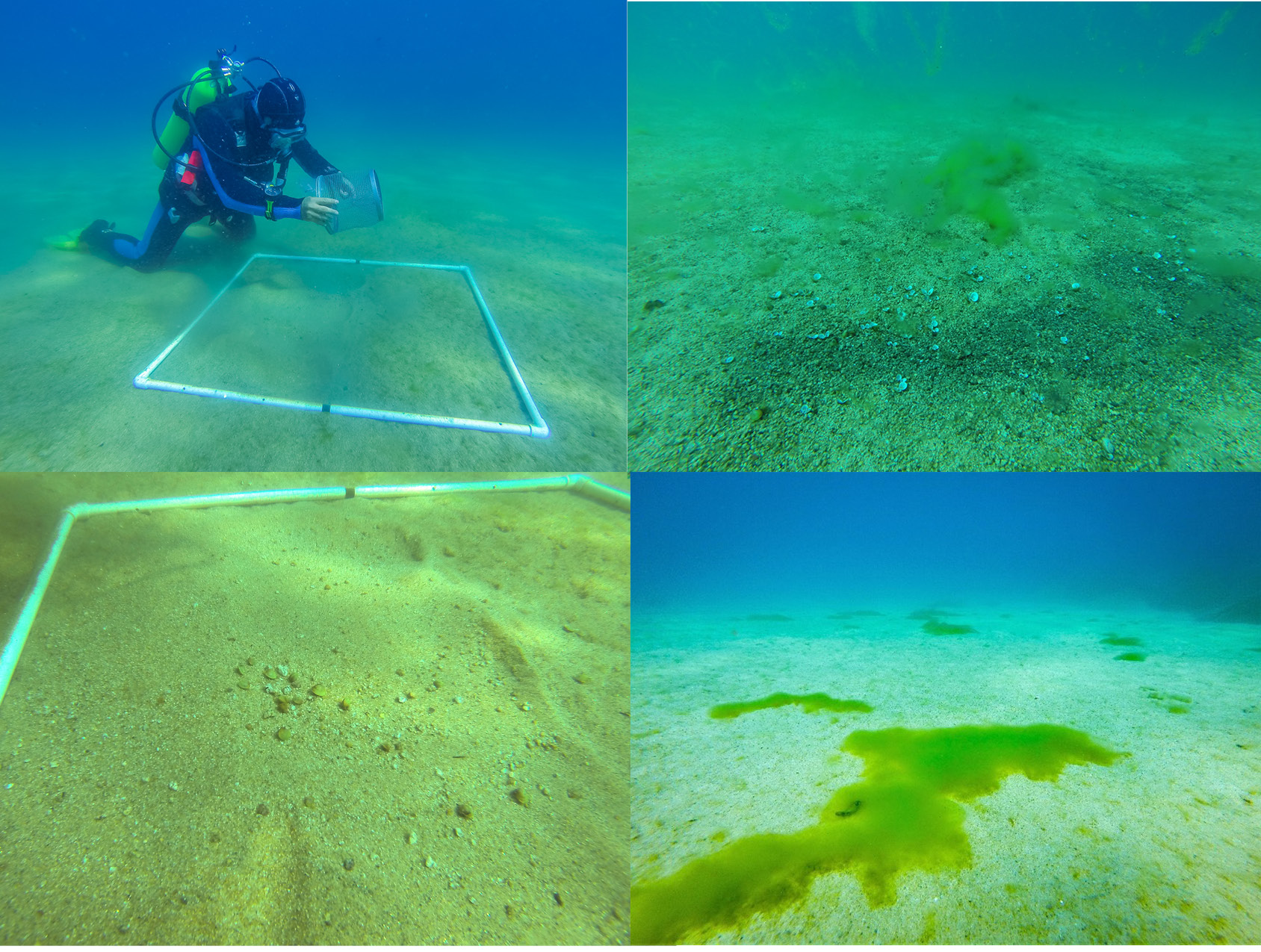
Asian clams were first observed in Lake Tahoe's aquatic ecosystem in 2002. Since then, their presence has wrought many negative consequences on the environment. An isolated population of clams was discovered in Sand Harbor State Park in 2014. A multi-year project designed to remove the clams from the area started in 2017. Following the conclusion of this project, TERC conducted a comprehensive survey in summer 2021 to assess clam density throughout the aquatic portion of Sand Harbor State Park. The survey revealed that viable clam populations were still found distributed throughout the entire survey area; however, densities were generally low with the exception of a few isolated areas.
One of the major concerns of Asian clams is that their metabolic byproducts (what they excrete) are known to simulate metaphyton growth. Metaphyton are filamentous algae that grow together in large, unattached matts. If Asian clam populations continue to grow and spread, so too will metaphyton, potentially becoming nuisance algae on beaches in the area. Clam surveys will continue throughout next summer. TERC will continue with the Nevada Division of State Lands to consider a range of mitigation measures.
Sand Harbor Asian clam monitoring - 2021 (arcgis.com)
Sand Harbor Asian Clam Monitoring 2021 Annual Report submitted to the Nevada Division of State Lands.
